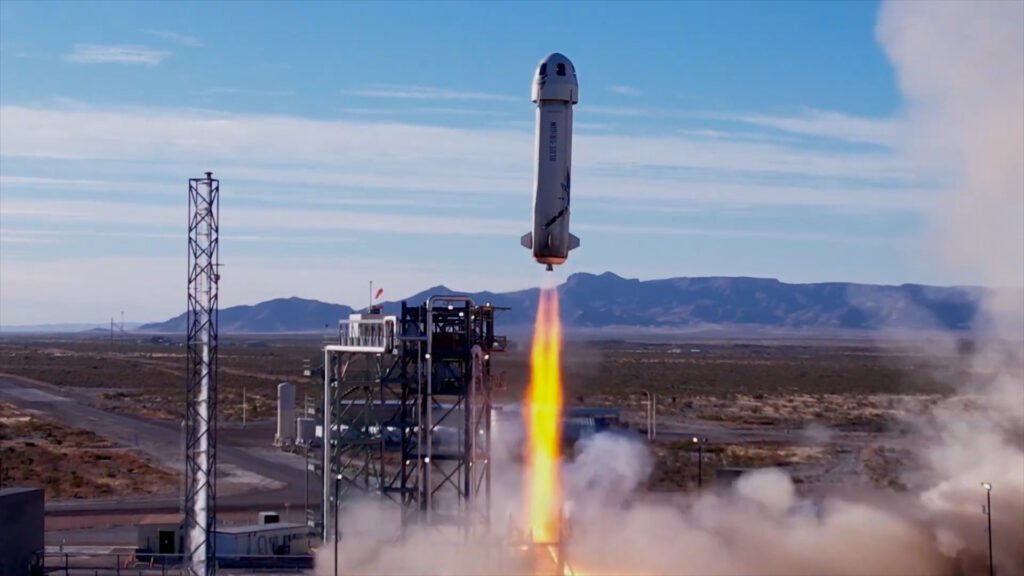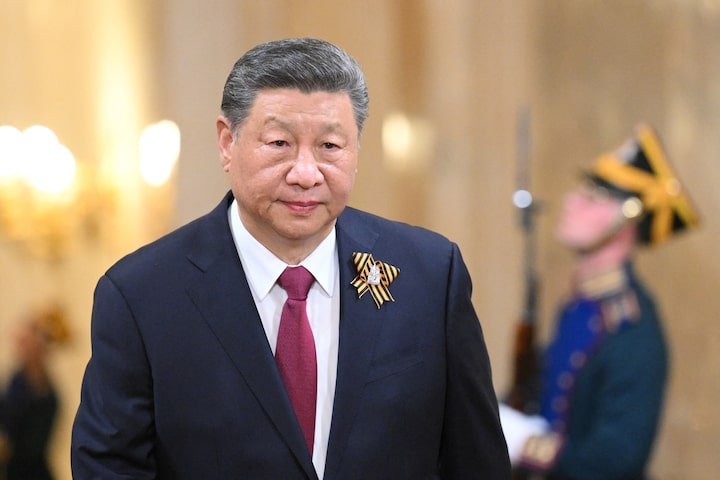Chinese President Xi Jinping is on a rare visit to Tibet.
Xi arrived in Lhasa on Wednesday on the 60th anniversary of the founding of the Tibet Autonomous Region. He is the first Chinese president to attend this ceremony.
The development comes amid tensions between
the Dalai Lama and the Chinese government about his potential successor. The Tibetan spiritual leader, who turned 90 in July, had announced just months ago that he would choose his own successor.
But what do we know about Xi’s trip? What does his rare visit to Tibet mean?
What we know about Xi’s strip
Xi arrived in Lhasa, the regional capital of Tibet, around noon on Wednesday. Photos in state media showed him being greeted by large crowds and dancers. Xi’s high-profile entourage comprised, among others,
China’s top political adviser Wang Huning, his chief of staff Cai Qi, Vice-Premier He Lifeng and Public Security Minister Wang Xiaohong.
Xi met several officials from the region including public security officers. He also met the Chinese-backed Panchen Lama.
Xi praised local authorities for “engaging in a thorough struggle against separatism”. He said they had been told to focus on four key areas – stability, development, environmental protection and border defence. “To govern and to develop Tibet, the first thing to do is to ensure political and social stability, as well as ethnic unity and that religious people are in harmony with society,” Xi said.
He also urged the CPC members to encourage the use of Mandarin. He said
economic, cultural and personnel exchanges between Tibet and China must increase. He said authorities must ‘guide’ Tibetan Buddhism and bring it in line with socialist society. He said a special district must be established to highlight improvements in ethnic unity. Xi further told CPC members to encourage agriculture, environmental protection and tourism in Tibet.
Significantly, Xi made no mention of the Dalai Lama.
What his rare visit to Tibet means
China has played an outsized role in Tibet’s affairs since communist forces invaded the region in 1951. China claims Tibet has been part of its territory for centuries, but many Tibetans say they were essentially independent for most of that time under their Buddhist theocracy.
The Tibetan Autonomous Region was established by Mao Zedong in 1965. China over the decades has tightened its grip on Tibet by demolishing monasteries and imprisoning monks who refused to toe the party line.
However, it has faced sporadic resistance from monasteries and communities. This, most notably occurred in 2008, when Lhasa witnessed an outpouring of rage against Chinese traders and residents, which quickly spread to other areas.
Recent years have seen the large-scale migration of majority Han Chinese to the high-altitude region, the virtual closure of Tibet to journalists and foreigners, the removal of Tibetan children from their families to boarding schools where they are taught in Mandarin, and the repression of all forms of political or cultural expression outside Communist Party control.
These efforts intensified after XI came to power in 2012. The trip makes sense in the backdrop of Xi’s seemingly newfound determination to tighten his grip on the Chinese state yet again.
The Dalai Lama fled Tibet and sought refuge in India in 1959 after a failed uprising against the Chinese. He has been in India ever since – a thorn in the side of the Chinese authorities. China and the Dalai Lama have been at odds over the question of his successor. While the Dalai Lama has made it clear that the atheistic Chinese state would have no say over the tradition, China seems ready and willing to do so.
In fact, China has already appointed its own Panchen Lama – who many Tibetans deride as a stooge of the CPC. The Chinese state also disappeared Gendün Chökyi Nyima, whom the Dalai Lama had appointed as the Panchen Lama – the second highest ranked official in the Tibetan religion – in 1995.
The then six-year-old boy and his family have not been seen in public since.
China’s contested border with India runs along Tibet’s southern edge, where China has been building roads and other infrastructure for possible military use.
Beijing has recently unveiled a mega hydropower project in the Tibetan Plateau – which has caused discomfort in New Delhi. Xi’ visit to Tibet also comes in the backdrop of Chinese Foreign Minister Wang Yi undertaking a trip to India.
India and China have taken steps to repair their relations which hit a nadir during the Galvan Valley clash in 2020. This in the backdrop of US President Donald Trump imposing tariffs on trading partners including India.
What do experts say?
Experts says Xi’s visit reinforces the desire of the Chinese state to exert control over the region – particularly as the question of the succession of the Dalai Lama looms large. Xi’s trip makes him the only Chinese visit leader to visit Tibet twice.
Robert Barnett, a scholar of Tibet at the School of Oriental and African Studies in London, told The New York Times,“The succession of the Dalai Lama is a symbolic battleground and symbolic opportunity for the party” to claim Tibet, Barnett said.
“I am really struck by the decision for Xi himself to go,” he added. He said the move shows the “remaining existential anxiety in the party about religion and nationality despite years of control.”
They also say it reinforces the limits of Chinese power over the hearts and minds of the Tibetan people.
“The Chinese have found themselves on the back foot,” Tseten Samdup Chhoekyapa, an official of the Dalai Lama’s office in northern India, told The New York Times. Chhoekyapa said the trip must be viewed through the prism of the Dalai Lama’s statement about his succession and that Beijing is trying to once again “legitimise its occupation of Tibet.
“For Tibetans, the anniversary of the People’s Republic of China’s creation of the Tibet Autonomous Region is no cause of celebration, but a painful reminder of China’s colonial occupation,” Dorjee Tseten, the Asia Program Manager at the Tibet Action Institute and a member of Tibet’s exiled Parliament, added.
“Tibet remains one of China’s greatest challenges, and Tibetans will never accept Beijing’s imposed succession plan for the Dalai Lama.”
With inputs from agencies






